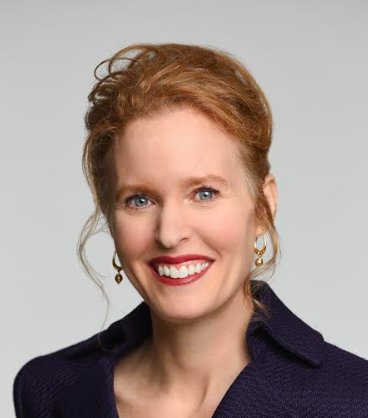
What about credit rating agencies as a market actor to inspire climate resilience? Already, the 11 recommendations by the Task Force on Climate-Related Financial Disclosure – sorted into Governance, Strategy, Risk Management and Metrics/Targets – are sinking into the market. Many are turning to the credit rating agencies and asking them if they are even looking for information on climate risk and what they’re doing with any they find.
As I reported in late 2016 in a Triple Pundit article, “Laurels for Credit Rating Agencies, Levers of Change in the Adaptation Market,” the rating agencies have been exploring this subject for several years. Last November, Moody’s Investors Service explained how it incorporates climate change into its credit ratings for state and local bonds. It said that cities and states are at greater risk of default if they don’t deal with risks from rising seas or strong storms.
So, what specifically should we expect from the rating agencies? I recently participated in a Brookings Institute panel with Standard and Poor’s Managing Director Kurt Forsgren, who said that the S&P will increasingly consider climate change in its rating analysis.
Climate change risk and credit rating agency assessment
Today, in factoring climate change risk into municipal ratings, the rating services focus primarily on management effectiveness and planning that includes climate change risk. This is especially true in sectors with distinct climate risks that apply to their assets or revenue sources (such as water and electric utilities). They often perform a qualitative assessment of the climate change risk when detailed information is lacking.
In addition to risk, they assess municipal resilience that looks for:
- Long-term management plans with adequately funded emergency funds
- Proper insurance coverage for the climate related risks for the region
- Deeper and more diverse economies
Evidence from Utility Districts
But, in reality, what are they seeking? For instance, S&P analysis for corporate ratings indicates that natural catastrophes lead to a one-notch downgrade 40 percent of the time. We know that the Municipal Utility District (MUD) ratings in and around Houston did not take a near-term hit in S&P’s assessments immediately following Hurricane Harvey, although the agency notes that it does “not preclude longer-term [rating] challenges for Hurricane []- affected [] MUDs.”
S & P’s specific comments for the MUDs are instructive for all build projects, planned or in place: “S&P Global Ratings believes the largest potential long-term rating impact to MUDs would be caused by a decline in the district’s assessed values, which support not only operational revenue but also the district's ability to pay its debt burden, which is a primary driver for our MUD ratings.”
It added: “MUDs with comparatively higher tax rates may face some practical taxing limitations as affected areas adjust their tax rates to compensate for declines in assessed values.”
Although S&P believes the robust reserves of most MUDs will insulate them from rating downgrades, the impacts they expect from climate disruption are pretty clear here. Credit rating agencies see the physical impacts of climate change as material to the financial system. The larger the shock event, the longer and deeper the impact on credit quality, especially for those with poor credit quality before the event.
This is a major reminder about the importance of resilience. Communities struggling with poor credit quality will find it doubly difficult to borrow at favorable rates as the impact of climate change continues to grow – further exacerbating both market and social inequities.
Resilience Likely Helps
It seems we have the market signal we’ve been waiting for in the climate action community. This is a call to arms for all resilience brokers to build security, stability and sustainability in lower-resourced communities.
The key actions:
- Get ahead of climate risk by making knowledge of it front and center for existing physical asset and future investment planning.
- Collaborate among sustainability, risk, finance and insurance leaders internally and externally; climate change is no longer an issue to shift to the sustainability officer’s desk.
- Through actions one and two, make sure that every investment is an investment for resilience, not just a few show ponies.
References:
S&P Global “Near-Term Rating Stability Does Not Preclude Longer-Term Challenges for Hurricane Harvey-Affected Texas MUDs” 5 September 2017. https://www.spglobal.com/our-insights/Near-Term-Rating-Stability-Does-Not-Preclude-Longer-Term-Challenges-for-Hurricane-Harvey-Affected-Texas-MUDs.html
S&P Global “How Long 'Til We Get There? Major Post-Hurricane Recoveries in Recent Years.” 7 September 2017. https://www.spglobal.com/our-insights/How-Long-Til-We-Get-There-Major-Post-Hurricane-Recoveries-In-Recent-Years.html
S&P Ratings Direct, “Climate Change Will Likely Test The Resilience Of Corporates’ Creditworthiness To Natural Catastrophes”, 20 April 2015. http://www.actuarialpost.co.uk/downloads/cat_1/SP_Climate%20Change%20Impact%20On%20Corporates_Apr212014.pdf

Joyce Coffee, LEED AP, is founder and President of Climate Resilience Consulting. She is an accomplished organizational strategist and visionary leader with over 25 years of domestic and international experience in the corporate, government and non-profit sectors implementing resilience and sustainability strategies, management systems, performance measurement, partnerships, benchmarking and reporting.














